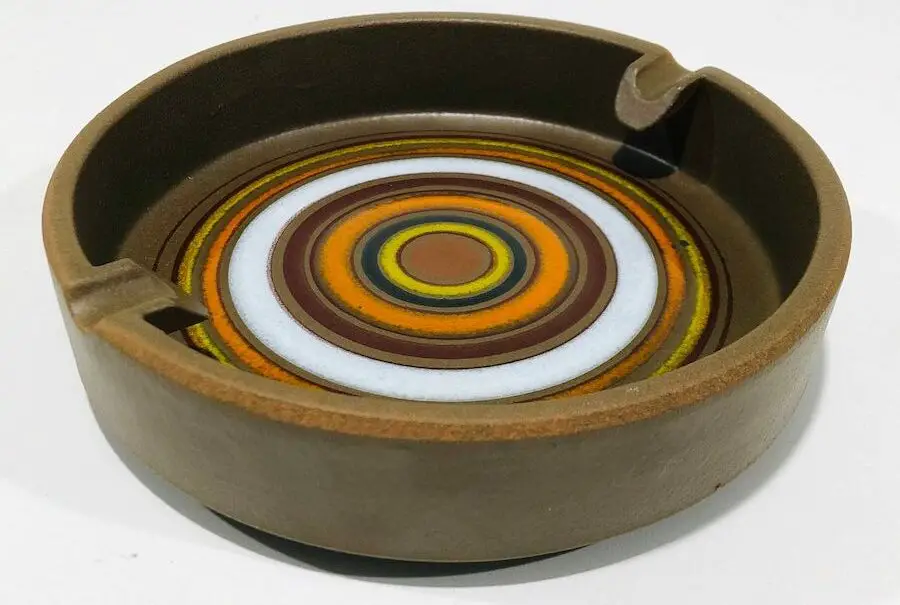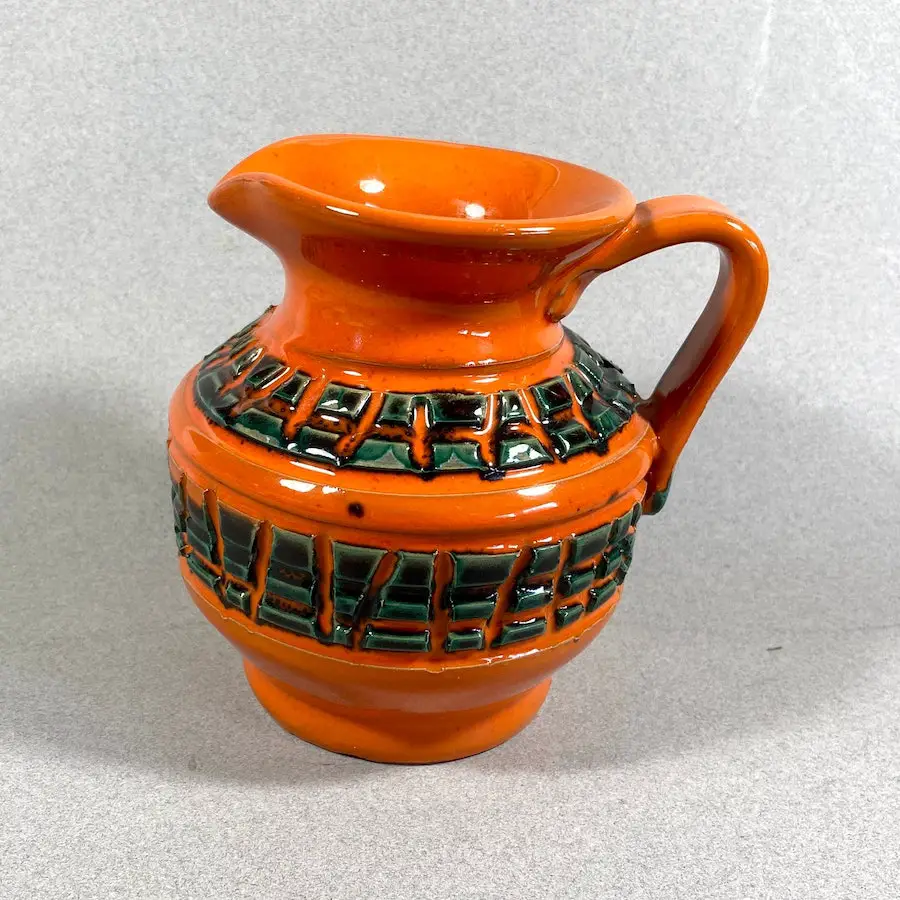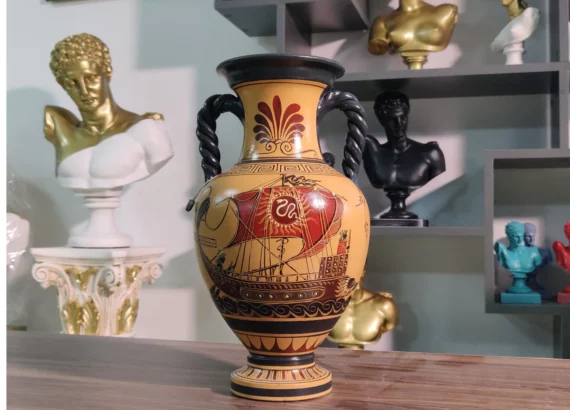Bitossi Ceramics History & Signs to Identify Fake

Bitossi ceramics are a combination of Italian brilliance and high-end design. Since its beginning, the company has collaborated with well-known designers to create beautiful and innovative goods that combine heritage with Italian flair.
The Bitossi family has been involved in ceramics since the 1870s. But it was in 1921, when Guido Bitossi created Manifattura Cavaliere Bitossi e Figlia in Montelupo Fiorentino, near Florence, that modern pottery truly began. Bitossi’s ceramic creations took on Aldo Londi’s delightfully humorous, creative, and modern style once he was elevated to artistic director in 1946. His works were a brilliant blend of usefulness and beauty.
Cinzia Bitossi, a fourth-generation family member, is spearheading the re-discovery and development of this extraordinary legacy. Londi also pushed other brilliant designers, such as Ettore Sottsass and Piero Fornasetti, to design for Bitossi. The Bitossi firm is still in operation today.
Table of Contents
Bitossi Pottery History
The Bitossi family has been documented in the Montelupo Fiorentino region as far back as 1536. They’ve worked as kiln workers, sculptors, painters, and notable potters in this area with its historic ceramic traditions, only a few kilometers outside of Florence, for generations, and in the twentieth century, they contributed an incredible aesthetic and formal rejuvenation to their work.
Guido Bitossi, the heir to a long family and history, created the “Maioliche artistiche Guido Bitossi” factory in 1921, offering a kind of manufacturing still tied to the past’s tradition and classical styles, mixed with research and study on ceramics goods.
Beginning in the early 1950s, the company’s growth took on a more modern tone under the artistic leadership of Aldo Londi, a man with an intuitive creative and aesthetic sense as well as a sharp eye for changes in taste and the distinctiveness of Italian products.
Londi arrived in Bitossi in 1946 and remained the uncontested protagonist for the next fifty years, first as a painter, then as creative director, and ultimately as a diligent study of styles and models to imitate.
Many designers have contributed to Manifattura Bitossi’s products over the years, interpreting heritage and creating new product lines. To begin with, Architect Ettore Sottsass, who began visiting the Manifattura Bitossi in 1955 to explore and develop new ceramics. His collections marked the beginning of a new era in Italian design.

Bitossi Ceramiche has been operated by the original family for centuries, from Vittoriano Bitossi through his daughter Cinzia, and subsequently his niece Ginevra Bocini, constantly exhibiting Italian “Made in Italy” quality across the world. The Manifattura was included in the Unioncamere Nazionale and the Chamber of Commerce’s Register of “Historical Italian Companies” in 2014.
Bitossi Pottery Marks. How to Identify Bitossi Pottery?
According to Modernware, Vintage Bitossi pieces are generally marked with a handwritten “Italy” and a style number, which often includes a capital “B.” Bitossi ceramics are not always clearly marked, prompting many to affix this designation to any ceramic ware stamped “Italy.” The best approach to assess Bitossi is to become familiar with its glazes, unique texture, and design impressions. Some of their work was embossed with a name stamp starting in the 1970s.
But beware: in 2001, Bitossi began reissuing several of Aldo Londi’s iconic designs. The newer pieces are clearly identified and are mold-made, thus they lack the older pieces’ original coarser, handmade feel.
Bitossi pieces are available in a variety of colors, including red, gold, orange, brown, green, yellow, and others.
Bitossi Pottery Designs and Patterns
The company has collaborated with famous designers to develop beautiful and creative goods that mix heritage with Italian flair since its inception. The classic collections exemplify mid-century modern style, with vibrant colors and patterns paired with excellent craftsmanship.
Rimini Blu became one of the most popular collections in the company’s history. Animal silhouettes were finished with Aldo Londi’s signature textures, which complemented the intricate, hand-engraved details.
Bitossi has collaborated with modern designers from all around the world in recent years. Karim Rashid, Nathalie du Pasquier, Max Lamb, and Benjamin Hubert are just a few of the well-known names. All Bitossi ceramic goods proudly display the “Made in Italy” mark. They’re also constructed entirely by hand.
Each piece in the brand’s collection is one-of-a-kind and handcrafted by experienced craftsmen. The original lines, as well as the more contemporary innovations, are unquestionably collector’s items.

The Rimini Blu line, which is among the classic collections, comprises a wide range of items, from vases and bowls to umbrella stands and ornamental accessories. They’re all the same hue, a dark yet bright blue with a rough surface. Clean lines and rounded forms are combined with strong patterns and color contrasts in Ettore Sottsass’ creations.
The designs in the newer collections range from Benjamin Hubert’s minimalist products to Karim Rashid’s whimsical designs, Dimorestudio’s abstract works, and Nathalie du Pasquier’s sculptural work. Aside from the established collections, Bitossi also produces bespoke Bitossi ceramics for architecture and interior design projects.
Bitossi’s ceramic creations took on Aldo Londi’s delightfully quirky, creative, and modern style once he was elevated to artistic director in 1946. His creations were a brilliant blend of practicality and beauty.
Bitossi Pottery Animals
Aldo Londi, the former art director of Bitossi ceramics, designed the Rimini Blu line in the early 1950s. This is the collection to which Bitossi animal designs belong. The vases and animals in this charming collection are distinguished by their distinctive blue coloration and uneven texture. These animals include the following;
- Bitossi Bull
- Bitossi Horse
- Wild Boar
- Ceramic Owl
- Camel
- Fish
- Elephant
- Cat
Among others.
Conclusion
Bitossi currently focuses on designer ceramics research and design, while continuing to interpret the heritage by presenting Aldo Londi’s classic topics. In the never-ending search for a balance between know-how, creativity, and research, many external partners, architects, and designers are inspired by the practices of the past that are preserved in the Historical Archives.
Bitossi has collaborated with modern designers from all around the world in recent years. Karim Rashid, Nathalie du Pasquier, Max Lamb, and Benjamin Hubert are just a few of the well-known names. All Bitossi ceramic goods proudly display the “Made in Italy” mark. They’re also constructed entirely by hand. Each piece in the brand’s collection is one-of-a-kind and handcrafted by experienced craftsmen.



